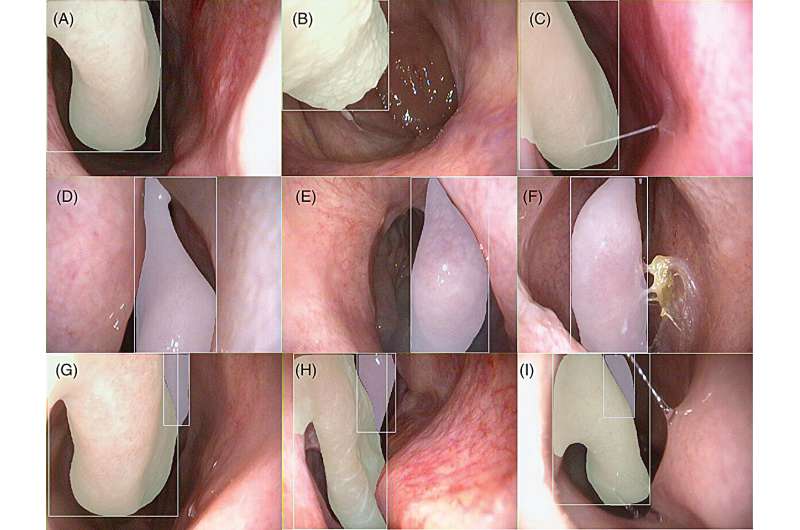This article has been reviewed according to Science X's editorial process and policies. Editors have highlighted the following attributes while ensuring the content's credibility:
fact-checked
proofread
Enhancing nasal endoscopy with AI

A team of researchers from Ochsner Health have published an article in the International Forum of Allergy & Rhinology exploring the application of convolutional neural networks (CNNs) to improve the accuracy and efficiency of nasal endoscopy.
The study, authored by resident physician Dr. Vinayak Ganeshan under the guidance of senior otolaryngologist Dr. Edward D. McCoul, addresses the challenges posed by the intricate nasal cavity anatomy in rhinology diagnostics.
Nasal endoscopy (NE) is an essential diagnostic tool in rhinology, but its effectiveness can be hampered by the complex structure of the nasal cavity. The study investigated a CNN-based model designed to accurately localize and segment important landmarks in nasal endoscopy images.
Images for the study were gathered from NE examinations conducted at Ochsner Medical Center in New Orleans between 2014 and 2023, using a standard digital endoscope. A total of 2,111 images underwent manual segmentation by three physicians.
The researchers configured the YOLOv8 object detection model to perform three tasks: classify the presence of a turbinate, detect its location, and apply a segmentation mask delineating its borders. Transfer learning was employed to refine the model's performance on NE images through backpropagation and stochastic gradient descent.
By manually selecting hyperparameters and halting training upon a 15-epoch stall in validation performance, the model achieved impressive results.
The model identified the inferior turbinate (IT) and middle turbinate (MT) with an average accuracy of 91.5%, an average precision of 92.5%, and an average recall of 93.8%. At a 60% confidence threshold, the model's average F1-score stood at 93.1%.
"Our research demonstrates that convolutional neural networks can significantly enhance the precision of nasal endoscopy interpretation," stated Dr. Ganeshan. "Achieving an average accuracy of 91.5% in localizing essential anatomical structures like the inferior and middle turbinates marks a step forward in diagnostic efficiency and accuracy."
This successful deployment of the YOLOv8 model represents a substantial advancement in rhinology. The model's ability to accurately identify and segment the IT and MT could aid clinicians in diagnosing and treating sinonasal diseases more effectively. This progress is particularly advantageous for trainees and non-specialists who often encounter difficulties with the nasal cavity's complex anatomy.
"This study showcases the potential of CNNs to enhance nasal endoscopy's accuracy and efficiency," said Dr. McCoul. "By leveraging advanced AI technologies, we can markedly improve our diagnostic capabilities and provide superior patient care for those with sinonasal conditions."
More information: Vinayak Ganeshan et al, Enhancing nasal endoscopy: Classification, detection, and segmentation of anatomic landmarks using a convolutional neural network, International Forum of Allergy & Rhinology (2024). DOI: 10.1002/alr.23384





















